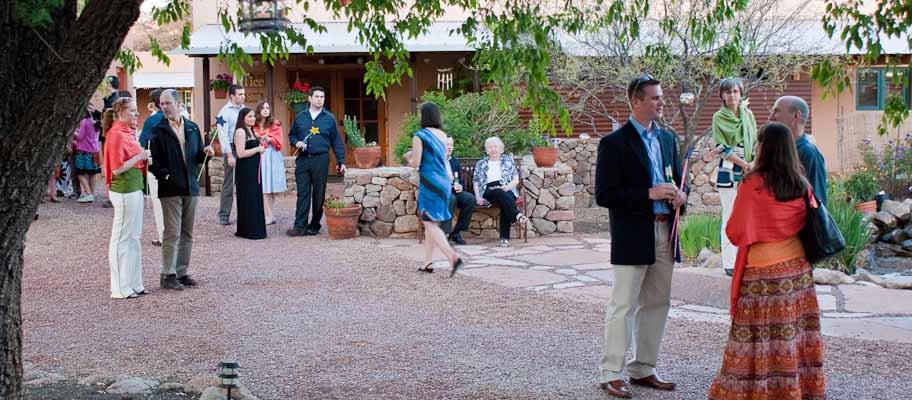A Story about Creativity
A long time ago, I was asked to be a part of a study about Creativity. I’m not supposed to reveal who sponsored this study, but suffice it to say it was well funded. Let’s call them the Company.
The Company sent me 50 poems, 50 stories, and 50 essays by 8th graders and said, “Using whatever criteria you desire, arrange each pile from Most Creative to Least Creative. In the top right hand corner, write a big ‘1’ on the Most Creative piece and so on down to 50. Then send the stacks back to us.”
A few months later, I was summoned to the Company’s retreat complex, which featured large meeting rooms, a small hotel, and a private, fine-dining room.

As we waited for the meeting to start in a large room that overlooked the pastoral grounds, everyone started talking.
“I want to know how all of you ranked those pieces.”
“Me, too.”
“Of course, our results are going to be all over the place.”
“Definitely.”
“Because creativity is so subjective.”
Lots of nods.
I piped up. “Actually, I think the results will be pretty consistent.”
Lots of puzzled looks.
“And we’re not going to talk about creativity,” I continued. “We’ll probably talk about craft.”
“Craft?”
“Yes, craft. The language of craft.”
A smartly suited woman breezed into the room, and we got started.
There were about 20 of us at a board-room table, and we went around an introduced ourselves. There were child psychologists, a woman from Sesame Street, the editor of a literary magazine for children, a filmmaker, a children’s book editor, and a small group of 8th grade language arts teachers, among others.
That’s when I realized that while everyone in the room specialized in either “Young People” or the Creative Arts, I was the only person in the room who taught creative writing.

The Company Woman said, “You might be surprised by this, but your rankings were surprisingly consistent.”
“No!”
“How can this be?”
On a large screen, she projected two poems. “We broke your rankings into fifths. Top fifth, second fifth, middle fifth, and so on.” She pointed to the poem on the right. “All of you placed this poem in the top group, while this one…” she pointed to the poem on the left, “…was consistently placed in the second group. Can you talk about why you believed this one to be ‘more creative’ than the other?”
Fingers went to chins. Brows were furrowed. And then they started talking. “Well, the one on the right has more things in it. I visualized and heard sounds.”
I couldn’t stop myself. “Those are called images.”
“Yes, it had more images. And the lines were broken in interesting places.”
Another person said, “I’d get to the end of the line and think one thing, and then I’d go down to the next line and think something different.”
Again, I spoke up. “Yes, that’s called enjambment.”
We moved on to the stories. The Company Woman showed us two stories, one we judged to be one of the Least Creative, and another we said was More Creative.
“The one on the right was too simple. Nothing interesting happened. It started, got going, but never ended. There didn’t seem to be much point to it. But the other one, there was a definite problem being dealt with.”
I talked about how “Only trouble is interesting,” a Janet Burroway maxim. I talked about conflict and plot.
They said, “I felt like I was inside a specific sequence of events in this story.”
I talked about dramatized scenes and vivid, continuous fictional dream.
This continued for two days—them saying “I know this one is better than that one, but I can’t explain why.”
And me explaining why.
I noticed that the Language Arts teachers were scribbling notes furiously. I asked them, “You teach creative writing, right?”
They nodded.
“So what do you do?”
They looked a little sheepish. “We give them a piece of paper and a pencil and say ‘Be creative. Write something. Let your imagination flow.’”
I had to fight to contain myself.

I said, “Well, that’s a start, but it’s sort of like teaching someone to play piano by sitting them down at the keyboard and saying ‘Be creative. Make some sounds. Let your spirit soar.’”
“But how in the world are we supposed to teach creative writing?” they asked. “It’s impossible.”
I said, “Go to a bookstore. Go on Amazon. There are hundreds, thousands, of creative writing textbooks. Give your students the building blocks, the tools, and then tell them to let their imaginations flow.”
The weekend was sort of tiring, actually. I felt like a sign language interpreter, standing there for hours and hours, signing and explaining and trying to establish a common vocabulary.
Still, the experience was gratifying, and not just because I got paid. I’m grateful to The Company for inviting me to that weekend retreat on creativity.
The experience convinced me that what I did for living had cultural—dare I say it? even practical—value. My profession mattered. I wasn’t participating in some crazy scam. Indeed, creative writing can be taught.
The most creative pieces we saw that weekend were those in which the students seemed to have the most “tools.”
Maybe they had those tools because they were naturally gifted—sure, maybe that.
Or maybe they had the tools because they read a lot—they’d stolen or borrowed them.
Or maybe, it was because their teachers had given them these craft tools—and those little buggers had used them well enough to convince a room full of intelligent adults that they were “creative.”
I tell this story when people ask me: “What’s the difference between craft and creativity?”
I tell this story when people ask me: “But can creative writing really be taught?”
What Made Me Think of This Story
I realized it’s been two years since I published that essay at The Millions about teaching novel writing.
Some people say that novel writing can’t be taught, that you have to “teach yourself” how to write a novel.
I say, sure you do, but wouldn’t it be nice if someone had given you some tools for your novel-writing toolbox first?
I’m teaching my novel-writing class for the fourth time this semester. You can see what we’re up to here. Here’s the schedule.
Every week, we focus on a different tool, slowly working our way into this seemingly impossible and magical and creative process.
Pedagogically, they call this scaffolding. You build an architecture, build student confidence, and then you pull the scaffold away and there they are, doing it on their own. (I might not be using the term in exactly the right way, so forgive me if that’s so.)
I met my novel-writing students last night and told them this: I don’t know if you will finish the novel you write this semester, but if some day—a year, ten years from now—you get an idea and want to write a novel, I hope you’ll remember these steps and use the tools you pick up in this class.
Tonight I meet my Literary Citizenship students for the first time. Their assignment is to blog weekly, and so, dear reader, will I.
Stay tuned.
Teaching Writing
What a great post, Cathy. I love your story about The Company. I love that there is a way to teach creativity, and that you know how to do it.
Oh I don’t know if I know how to do it. But I try. Thank you, Kathy!
Thanks, Cathy. You have clarified why I sometimes feel uncomfortable when a non-writer says, “Oh, you are so creative.” Yet, when someone who understands words, points out an issue of craft, my response is completely different.
That’s a good analogy, Terry. I get that a lot, too.
So Cathy, what is creativity after all?
Is it that idea for a novel or story that students might mysteriously “get” someday? or what?
Interesting post—thanks.
Jen, good question and worth a post in and of itself. Quick answer: I think creativity is like “chi” + brain chemistry.
Here is a better answer as to what I think creativity is.
“‘There is a vitality, a life force, an energy, a quickening that is translated through you into action, and because there is only one of you in all of time, this expression is unique. And if you block it, it will never exist through any other medium and it will be lost. The world will not have it. It is not your business to determine how good it is nor how valuable nor how it compares with other expressions. It is your business to keep it yours clearly and directly, to keep the channel open. You do not even have to believe in yourself or your work. You have to keep yourself open and aware to the urges that motivate you. Keep the channel open. … No artist is pleased. There is no satisfaction whatever at any time. There is only a queer divine dissatisfaction, a blessed unrest that keeps us marching and makes us more alive than the others.” –Martha Graham
Great article, Cathy. I was just talking about this with a friend and your article is perfect. I am forwarding it to her. Many good thoughts.
Thanks, Grace!
Love the post, Cathy. Great story.
As usual, fantastic post, Cathy. This might be the best rebuttal of the “It Can’t Be Taught” theory that I’ve ever read.
Thank you, Lori, and wow, thanks John. I’ve been *longing* to write about this experience for years.
Hi, Cathy!
I really liked your post. I’ve been through the Quixotian task of trying to explain that Writing Can be Taught and I was starting to doubt my own theory. Maybe I am special and talented, a part of me said. Maybe what I do is something others really can’t do. Maybe all that time I spent trying to see how Marquez did it (grammatically-speaking) would have been wasted by another person, because they would’ve understood little of what I understood. (hello, seductive theory of special specialness, how appealing you are because it means I am awesome now and no longer have to make an effort)
But, well, here you are telling my doubting part that it’s actually wrong. Others can get it. Others can learn. I am not special and talented. Woe is me! What will I ever do without my mini-aura of mini-greatness?
Actually… Kicking the procrastinator aside… If others can get to where I am, it means that I can get over the issues I have now with the damned short story that just won’t be written and that wonderful, horrible novel I’ve planned that keeps escaping me and killing me and turning me this way and that.
“Chin up!”, your article tells me, “You might not be good enough to write the things you want to write now, but if you keep at it you might just find out how it’s done”. Quite nice.
Thanks Roxana. Glad you found me here!
It’s a pleasure to have found you 🙂
Enjoyed your piece on creativity. Thanks. Lucille